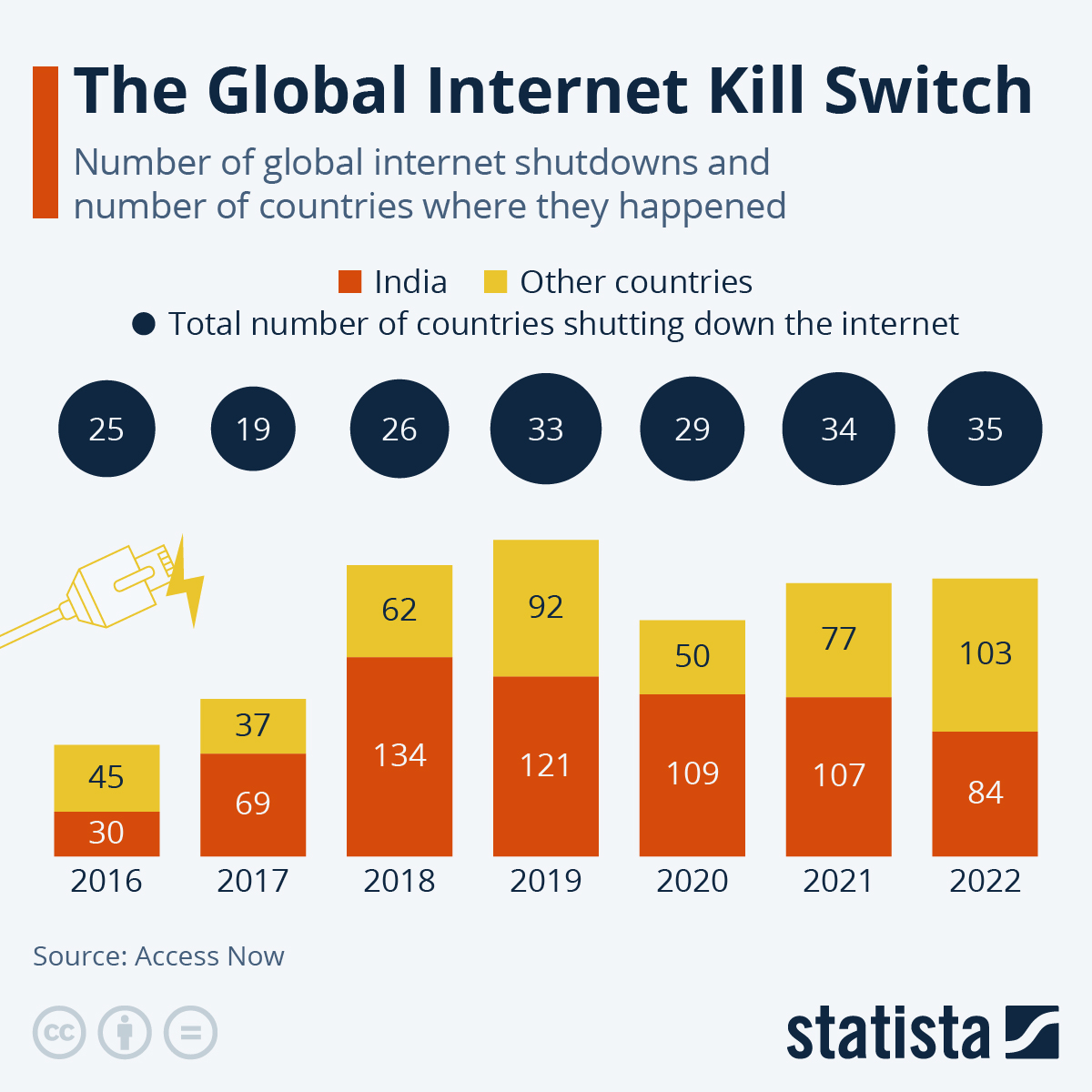The global number of internet shutdowns has been rising again for the second year in a row. A newly released report by Access Now puts the number of internet shutdowns in 2022 at 187. Just under half – 84 – happened in India.
In the year of 2020, the number of internet shutdowns dipped. Many government use internet shutdowns in connection with curbing protests and dissent and the pandemic likely caused fewer of these events to happen as stay-at-home orders were issued and limits on gatherings were imposed. The highest number of internet shutdowns since reporting started in 2016 was reached in 2019 at 213. The same year also saw the highest figure of internet shutdowns in India – 121. Despite the country consistently registering the most internet shutdowns since the inception of the survey, 2022 saw India’s share in total global internet shutdowns decrease to the lowest point in years. Simultaneously, the total number of countries which employ internet shutdowns has risen, surpassing the 2019 number again as of 2021.
Shutdowns in India clustered in Kashmir in 2022, but also in Rajasthan, where they have been used during protests (and preemptively when protests were expected), but also during exams in recent months. Both regions have seen violence often tied to tension between Hindus and Muslims, in Kashmir also in connection with the Muslim-led independence movement.

Description
This chart shows the number of global internet shutdowns and number of countries where they happened.
by Katharina Buchholz
Join: 👉 https://t.me/acnewspatriots
The opinions expressed by contributors and/or content partners are their own and do not necessarily reflect the views of AC.NEWS
Disclaimer: This article may contain statements that reflect the opinion of the author. The contents of this article are of sole responsibility of the author(s). AC.News will not be responsible for any inaccurate or incorrect statement in this article www.ac.news websites contain copyrighted material the use of which has not always been specifically authorized by the copyright owner. We are making such material available to our readers under the provisions of “fair use” in an effort to advance a better understanding of political, health, economic and social issues. The material on this site is distributed without profit to those who have expressed a prior interest in receiving it for research and educational purposes. If you wish to use copyrighted material for purposes other than “fair use” you must request permission from the copyright owner. Reprinting this article: Non-commercial use OK. If you wish to use copyrighted material for purposes other than “fair use” you must request permission from the copyright owner.
Disclaimer: The information and opinions shared are for informational purposes only including, but not limited to, text, graphics, images and other material are not intended as medical advice or instruction. Nothing mentioned is intended to be a substitute for professional medical advice, diagnosis or treatment.























![Tucker Carlson Released an ALARMING Message … [Published Yesterday]](https://ac.news/wp-content/uploads/2024/04/download-3-120x86.jpg)






















Discussion about this post